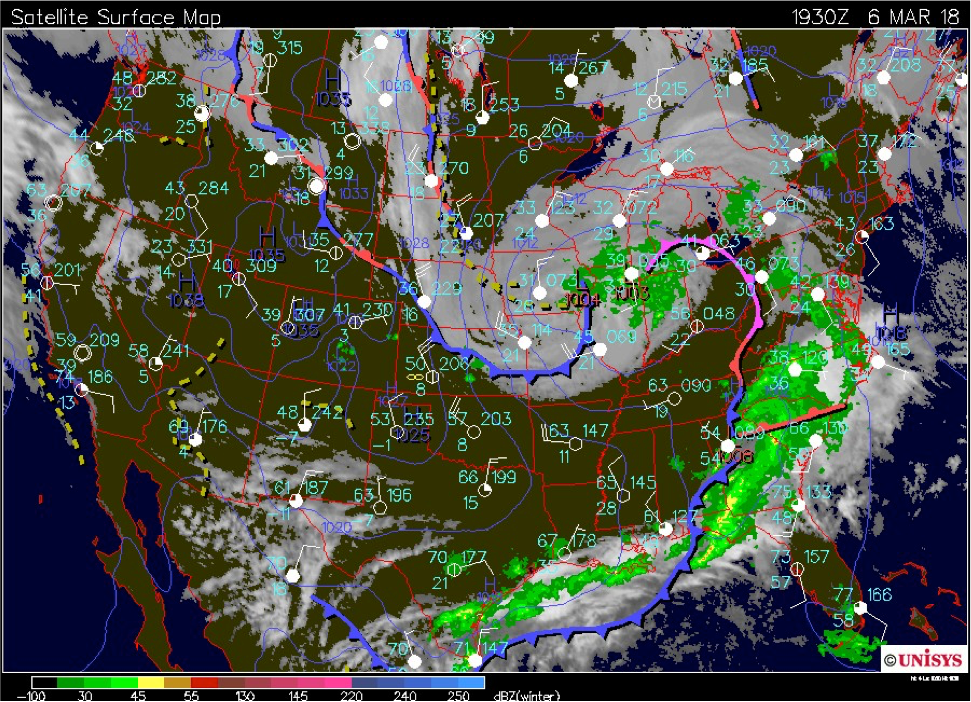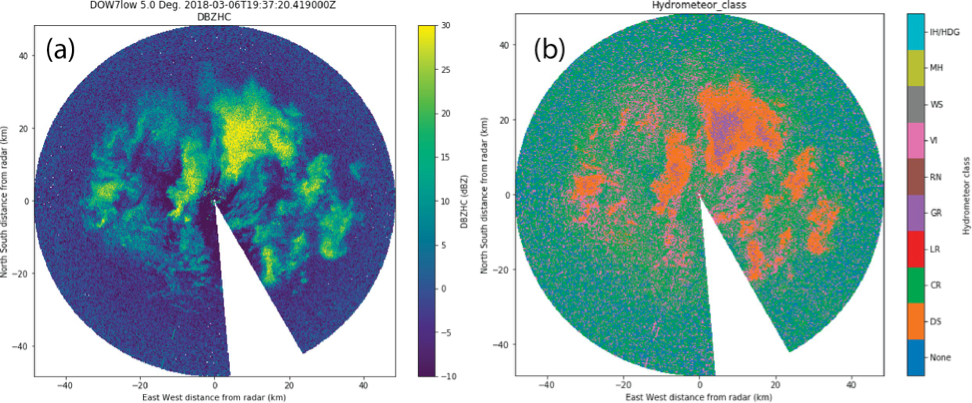6 March 2018
As the elongated closed surface low from IOP 2 exited Minnesota and traversed Indiana from west to east (Fig. 16), a brief (three-hour) IOP was convened in response to a forecast rain-to-snow transition event. On the east side of the low, rain was expected, but practically none fell in the 12 hours preceding IOP 3 owing to dry deep-layer conditions behind the occluded front.
Graupel was observed in falling in Lafayette shortly before IOP 3 began at 1932 UTC, and snow was observed thereafter. The surface temperature recorded by the DOW pod (Fig. 17a) and by KLAF (not shown) never dropped below freezing, but instead oscillated between about 2 and 4 °C. Snow flakes can persist without melting at above-freezing temperatures when the relative humidity (which hovered around 80% for this deployment; Fig. 17b) is low (Matsuo and Sasyo 1981). Indeed, no melting layer was observed during this deployment, leading to its termination at 2230 UTC.
EAPS 52300 graduate student A. LaFleur performed a hydrometeor classification on the DOW high-frequency data, but found (as in IOP1) that classification of vertically aligned ice was suspiciously high owing to ZDR bias of approximately -2.4 dB (not shown). The low-frequency DOW observations (Fig. 18a) exhibited minimal ZDR bias (< 0.2 dB; not shown). Because no soundings were available from Purdue for this deployment, the Lincoln, Illinois (KILX) synoptic sounding taken at 0000 UTC on 7 March 2018 was used in the semi-supervised HCA (Besic et al. 2016) instead (Fig. 18b). Precipitation cores containing mostly graupel (GR) were encircled by regions of dry snow (DS), which were themselves encircled by regions of ice crystals (CR). Very little vertically aligned ice (VI) was classified. Both graupel and dry snow were observed at the surface at ACRE.


